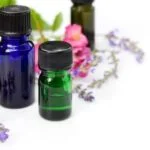Are you interested in learning how to make organic aromatherapy candles? Organic aromatherapy candles are a natural and holistic way to create a soothing atmosphere and promote wellness.
In this article, we will explore the benefits of organic aromatherapy candles, the basics of candle making, choosing organic ingredients, selecting the right aromas for aromatherapy, using natural colorants, the art of scent mixing, candle safety and storage, as well as packaging and presentation. Embracing organic ingredients and methods not only enhances the therapeutic benefits of aromatherapy candles but also contributes to a sustainable and eco-friendly lifestyle.
Organic aromatherapy candles are crafted using natural ingredients that harness the power of essential oils and natural waxes to promote relaxation, improve mood, and alleviate stress. The use of organic ingredients is essential for maintaining purity and maximizing the therapeutic effects of the candles. By utilizing organic materials, you can enjoy not only the delightful scents but also the wellness benefits without exposure to harmful chemicals often found in conventional candles.
Creating your own organic aromatherapy candles allows you to customize the scents according to your preference while ensuring that only high-quality natural ingredients are used. In this article, we will provide step-by-step instructions on how to make these soothing candles from scratch using organic materials.
Whether you are looking to start a new hobby or wanting to embrace a more natural lifestyle, making your own organic aromatherapy candles is a fulfilling and rewarding experience that enhances your well-being.
The Basics of Candle Making
Making organic aromatherapy candles is a wonderful way to enjoy the benefits of essential oils and create a soothing atmosphere in your home. To get started, you will need a few basic materials and equipment. First, you will need natural wax, such as soy wax or beeswax, which can be easily melted and poured into candle containers.
You will also need wicks, which are available in various sizes depending on the diameter of your candle container. Additionally, you may want to have a double boiler or a large heat-proof pitcher for melting the wax, as well as a thermometer to ensure the wax is the right temperature for pouring.
Next, it’s important to understand the process of melting and pouring the wax for your organic aromatherapy candles. The first step is to measure out the amount of wax needed for your candle container and place it in the double boiler or heat-proof pitcher. Then, heat the wax gently over medium heat until it reaches the desired temperature according to the type of wax you are using.
Once the wax has melted completely and reached the correct temperature, carefully add in your chosen organic essential oils and stir gently to combine. Finally, carefully pour the scented wax into your candle container, making sure that the wick stays centered.
One important tip for making organic aromatherapy candles is to be mindful of safety precautions when working with hot wax and essential oils. Always work in a well-ventilated area and use caution when handling hot materials. By following these basic steps for melting and pouring wax, you can create beautiful organic aromatherapy candles to enjoy at home or give as thoughtful gifts.
| Materials Needed | Equipment Needed |
|---|---|
| Natural wax (soy wax or beeswax) | Double boiler or heat-proof pitcher |
| Wicks | Thermometer |
| Organic essential oils | Candle containers |
Choosing Organic Ingredients
When it comes to making organic aromatherapy candles, the choice of ingredients is crucial in ensuring the purity and therapeutic benefits of the final product. Using organic essential oils and natural waxes not only enhances the aromatic experience but also aligns with a holistic and sustainable lifestyle.
Organic essential oils are derived from plants that have been grown without synthetic pesticides or chemicals, preserving their natural properties for use in aromatherapy. Additionally, natural waxes such as soy wax or beeswax are renewable and non-toxic alternatives to paraffin wax, offering a cleaner burn and reducing indoor air pollution.
Sourcing high-quality organic ingredients for candle making is essential to achieve the desired therapeutic effects and environmental consciousness. When selecting organic essential oils, it’s important to look for reputable suppliers that offer pure, unadulterated oils free from additives or synthetic fragrances.
Similarly, when choosing natural waxes, opting for certified organic options ensures that the wax has been produced sustainably without harmful chemicals or GMOs. By prioritizing the use of organic ingredients in aromatherapy candle making, you can create a product that is both beneficial for personal well-being and environmentally responsible.
In addition to being better for personal health and the environment, using organic ingredients in aromatherapy candles also contributes to supporting ethical and sustainable practices within the industry. By consciously selecting organic essential oils and natural waxes, candle makers can promote transparency and integrity in their products while empowering consumers to make informed choices about the items they bring into their homes.
| Organic Ingredients | Benefits |
|---|---|
| Organic Essential Oils | Pure, unadulterated scents; Therapeutic benefits; Environmentally friendly |
| Natural Waxes | Renewable source; Clean burn; Reduced indoor air pollution |
Selecting the Right Aromas for Aromatherapy
Organic aromatherapy candles are a wonderful way to enjoy the benefits of essential oils while creating a soothing and relaxing atmosphere in your home. When it comes to selecting the right aromas for aromatherapy candles, it’s important to consider the specific properties and benefits of each essential oil. Here are some helpful tips for choosing the perfect essential oils for your organic candles:
1. Understanding Essential Oils: Before you start creating your organic aromatherapy candles, it’s essential to have a good understanding of the different essential oils available and their unique properties. Some popular options for aromatherapy candles include lavender for relaxation, eucalyptus for invigoration, and citrus oils for uplifting and energizing effects.
2. Popular Aromatherapy Blends: One of the great things about making organic aromatherapy candles is that you can create custom blends of essential oils to suit your specific needs and preferences. For example, a blend of lavender and chamomile is perfect for promoting calmness and relaxation, while a combination of peppermint and lemon can help with focus and mental clarity.
3. Benefits of Aromatherapy Blends: Each essential oil has its own set of benefits, and when combined in a thoughtful blend, they can offer even more therapeutic effects. Consider experimenting with different combinations to create unique scents that cater to your desired mood or wellness goals.
Incorporating these tips into the process of making organic aromatherapy candles will help you create custom scents that cater to your specific needs while enjoying the natural benefits of essential oils in your home. Whether you’re looking to promote relaxation, boost energy, or simply enhance your overall well-being, there’s an organic aromatherapy candle blend out there that’s perfect for you.
Natural Colorants for Aromatherapy Candles
Choosing the right colorants for your organic aromatherapy candles is an important step in the candle-making process. Using natural pigments and dyes not only adds beauty to your candles but also aligns with the organic and pure nature of the aromatherapy experience. Here are some tips for incorporating natural colorants into your candle making:
Guide on Using Natural Pigments and Dyes
When selecting natural colorants for your candles, it’s important to choose options that are derived from plant-based sources such as herbs, flowers, and roots. Some popular choices include turmeric for a warm yellow hue, spirulina for a calming green tint, and beetroot powder for a lovely pink shade. These natural pigments can be added to the melted wax at different stages to achieve varying intensities of color.
Tips for Achieving Different Shades and Tones
Experimenting with different combinations of natural colorants can help you achieve a wide range of shades and tones in your organic aromatherapy candles. For example, mixing spirulina with a small amount of turmeric can create a beautiful teal color, while adding a touch of beetroot powder to the mix can result in a deeper purple shade. It’s important to start with small amounts of colorants and gradually increase as needed to avoid overpowering the wax.
Incorporating natural colorants not only enhances the visual appeal of your organic aromatherapy candles but also complements the therapeutic benefits of the essential oils used in them. By carefully selecting and experimenting with natural pigments and dyes, you can create unique and visually stunning candles that contribute to a holistic aromatherapy experience.
The Art of Scent Mixing
Understanding Essential Oil Properties
Before diving into scent mixing, it’s important to understand the properties of different essential oils. Some essential oils have calming effects, while others are invigorating or uplifting. By familiarizing yourself with the properties of each oil, you can effectively combine them to create a balanced aroma that serves its intended purpose.
Layering Scents for Complexity
One technique for scent mixing is layering different essential oils to create depth and complexity in the aroma of your organic candles. Start by choosing a base note oil (such as cedarwood or patchouli) for a grounding effect, then add middle notes (like lavender or rose) for balance, and finish with top notes (such as citrus or peppermint) for a refreshing touch. Layering scents in this way creates a multi-dimensional fragrance that evolves as the candle burns.
Creating Custom Blends
Experimenting with different combinations of essential oils is key to creating custom aromatherapy blends for your organic candles. Keep detailed records of your experiments so you can replicate successful blends and refine those that need adjusting. Consider seeking inspiration from traditional aromatherapy recipes, but don’t be afraid to think outside the box and create your own signature scents based on personal preferences and feedback from friends and family.
By mastering the art of scent mixing, candle makers can elevate their organic aromatherapy candles to offer unique and effective experiences for users seeking the benefits of natural and holistic wellness practices.
Candle Safety and Storage
Organic aromatherapy candles are not only soothing and therapeutic, but they also offer a clean and sustainable way to enjoy the benefits of aromatherapy at home. However, it’s important to prioritize safety when working with candles, especially those infused with essential oils. Proper candle safety and storage practices play a crucial role in ensuring that you can fully enjoy the experience of organic aromatherapy candles without any risks.
When it comes to making organic aromatherapy candles, safety begins during the crafting process. It is essential to work in a well-ventilated area and use a double boiler or a wax melting pot to melt the wax.
Always keep an eye on the melting process and never leave melted wax unattended, as it can pose a fire hazard if overheated. Additionally, be mindful of the temperature at which you add organic essential oils to the melted wax, as excessive heat can compromise their therapeutic properties.
Once your organic aromatherapy candles are ready for use, it’s crucial to follow proper burning and storage guidelines. Trim the wick before each use to prevent excessive smoking and maintain a clean burn.
When lighting the candle, ensure that it is placed on a heat-resistant surface away from drafts, flammable materials, and out of reach of children and pets. Furthermore, store your organic aromatherapy candles in a cool, dry place away from direct sunlight to preserve their quality and fragrance.
By understanding how to make organic aromatherapy candles safely and practicing proper candle maintenance, you can fully embrace the benefits of these natural creations while minimizing any potential risks. Prioritizing candle safety ensures that you can enjoy the therapeutic effects of organic aromatherapy without compromising on well-being or peace of mind.
Packaging and Presentation
Creating the perfect packaging and presentation for your organic aromatherapy candles is essential to convey their purity and benefits to potential customers. Here are some creative ideas and tips to ensure your candles stand out in a competitive market:
- Use eco-friendly and sustainable materials such as recycled cardboard, biodegradable plastics, or reusable containers for packaging your organic aromatherapy candles. Not only does this align with the values of your target market, but it also reduces the environmental impact of your products.
- Consider incorporating natural elements into your packaging design, such as dried flowers, hemp twine, or plantable seed paper. This not only enhances the visual appeal of your candles but also reflects the natural and organic qualities of the product inside.
- Labeling is crucial for communicating the purity and benefits of your organic aromatherapy candles. Make sure to highlight that you use high-quality organic ingredients, include the specific essential oils used in each candle, and provide information on the therapeutic properties of the aromas.
- If you sell your candles online or at markets, invest in professional photography to showcase their beauty and craftsmanship. High-quality imagery can significantly enhance the perceived value of your candles and attract more customers.
In order to effectively market and sell organic aromatherapy candles, it’s important to pay attention to every detail of their presentation and packaging. By combining sustainability, creativity, and informative labeling, you can create an irresistible product that truly shines in any marketplace.
Conclusion and Next Steps
In conclusion, organic aromatherapy candles are a wonderful way to bring the benefits of essential oils and natural ingredients into your home. By using high-quality organic materials, you can create candles that not only provide a beautiful aroma but also promote a healthy and sustainable lifestyle. As discussed, the process of making organic aromatherapy candles involves selecting the right ingredients, blending fragrances, and ensuring proper safety measures for a fulfilling and enjoyable experience.
Now that you have learned the basics of how to make organic aromatherapy candles, it’s time to put your newfound knowledge into practice. Remember to prioritize sourcing organic essential oils and natural waxes for your candle making endeavors to maintain the purity and integrity of your products. Additionally, take advantage of the wide variety of essential oils available to create custom blends that suit your preferences and desired therapeutic effects.
As you embark on your journey into the world of organic candle making and aromatherapy, there are endless opportunities for creativity and expansion. Whether you choose to continue perfecting your candle-making skills or explore new scent combinations, the possibilities are endless. Consider further resources such as workshops, books, or online communities dedicated to organic candle making to continue honing your craft and enjoying the many benefits of aromatherapy in a pure and sustainable way.

Are you looking for a natural way to improve your health and wellbeing?
If so, aromatherapy may be the answer for you.





